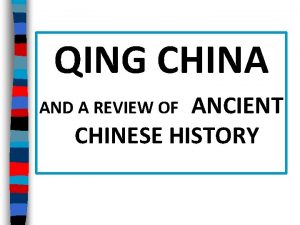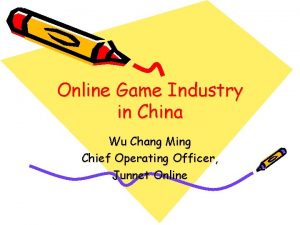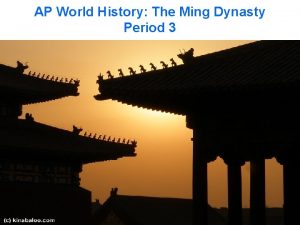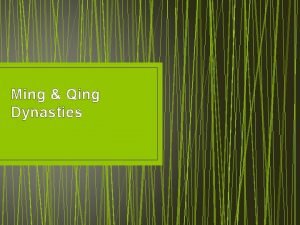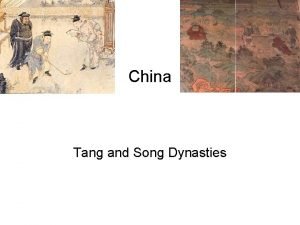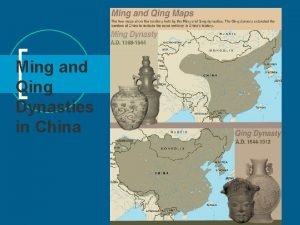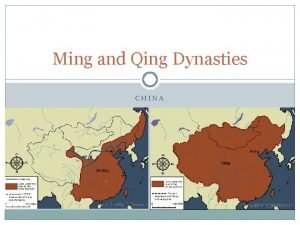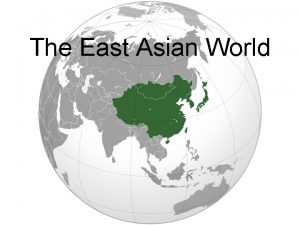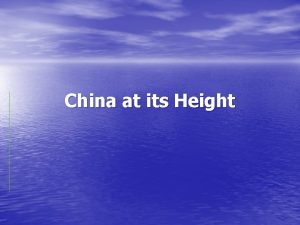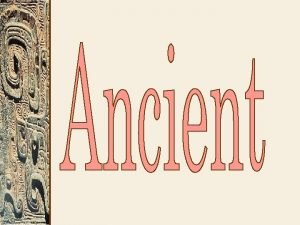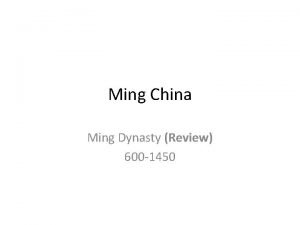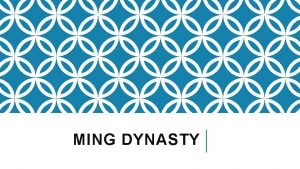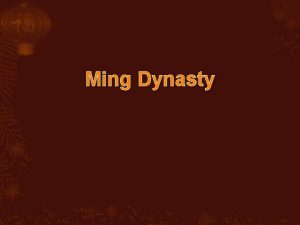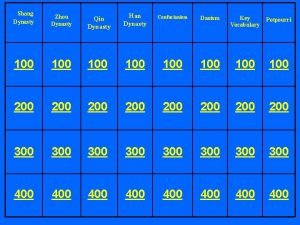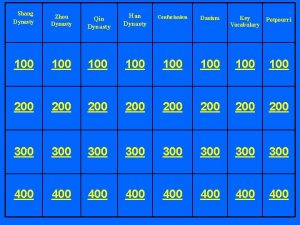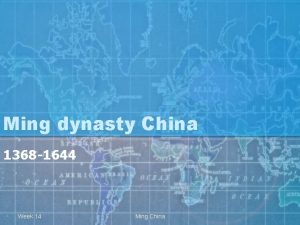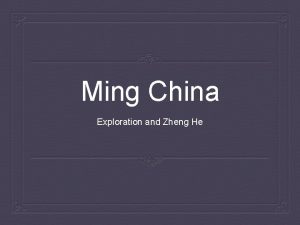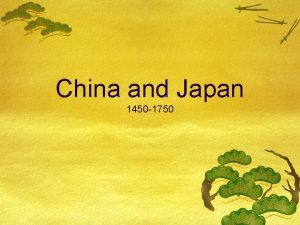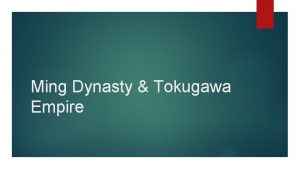China at its Height The Ming Dynasty The















- Slides: 15

China at its Height

The Ming Dynasty • The Ming dynasty was a time of greatness in Chinese history. • The Chinese extended their rule into Mongolia and central Asia.

The Ming Dynasty • The Ming rulers had an effective government using a bureaucracy. – Also set up a nationwide school system. • More manufactured goods were produced. • New crops were introduced.

The Ming Dynasty • Ming rulers also completed the Grand Canal. – Made it possible to ship grain and other goods from southern to northern China.

The Ming Dynasty • Emperor Yong Le began constructing the Imperial city of Beijing in 1406. – He moved the capital there in 1421

The Ming Dynasty • In 1514, a Portuguese fleet arrived off the coast of China. – It was the first direct contact between the Chinese Empire and Europe for roughly 200 years

The Ming Dynasty • an exchange of ideas and cultures took place – Christian missionaries brought new inventions • Ex: clocks and eyeglasses

The Ming Dynasty • During the late 16 th century a series of weak rulers led to a period of government corruption in China – A peasant revolt ultimately brought the Ming dynasty to an end.

The Qing Dynasty • The Manchus, farming and hunting people who lived Northeast of the Great Wall (Manchuria) took power after the Ming – Conquered Beijing and set up the Qing dynasty • The dynasty remained in power until 1911

The Qing Dynasty • At first the Chinese resisted the new rulers – the Qing eventually adopted the Chinese political system and were gradually accepted as the legitimate rulers

The Qing Dynasty • Under the Rule of Emperor Qianlong (1736 -1795), corrupt government and high taxes led to unrest in rural areas – Population growth put pressure on the farming land • Led to economic hardship for many peasants

The White Lotus Rebellion • Unhappy peasants eventually revolted in the White Lotus Rebellion – Greatly weakened the Qing dynasty

Contact With Europe • At the same time, Europe was seeking more trade with China • To limit European contact, the Qing confined all Europeans to a small island – Also limited the number of Chinese firms that Europeans could trade with

Contact With Europe • By the end of the eighteenth century, British traders began to demand access to additional cities along the Chinese coast.

Contact With Europe • In 1793, a British mission led by Lord George Mc. Cartney visited Beijing to ask for more liberal trade policies. – Emperor Qianlong replied that China had no need for British manufactured goods
 How did the ming dynasty restore chinese rule to china?
How did the ming dynasty restore chinese rule to china? Qing at its height
Qing at its height Bureaucracy
Bureaucracy Qing conquest of the ming
Qing conquest of the ming Ming dynasty game online
Ming dynasty game online The wing dynasty menu
The wing dynasty menu Ming dynasty ap world history
Ming dynasty ap world history Ming and qing dynasty
Ming and qing dynasty Tang vs song dynasty venn diagram
Tang vs song dynasty venn diagram Ming dynasty
Ming dynasty Qing dynasty location
Qing dynasty location Rise of the ming dynasty
Rise of the ming dynasty Spice t chart examples
Spice t chart examples Qing china at its height
Qing china at its height China zhou dynasty
China zhou dynasty Sui dynasty contributions
Sui dynasty contributions


